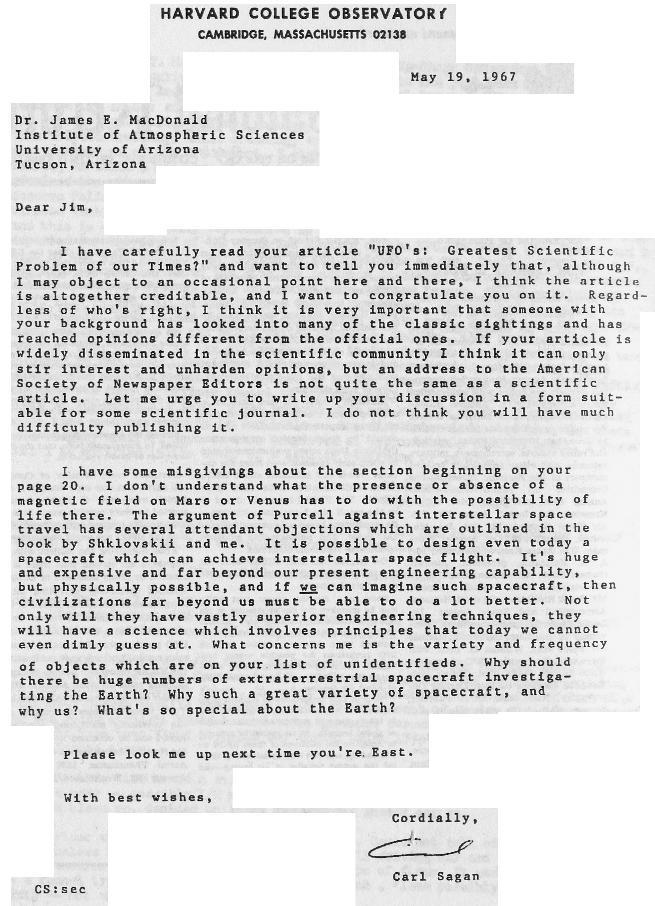Famous astronomer Carl Sagan, who immensely contributed to make astronomy a popular topic, was informed by Dr. James E. McDonald, a scientist with an impressive background who has been thoroughly studying the UFO issue including with witness, on the field, of the latter's article, demonstrating with facts and a scientific approach that UFO reports can't all be explained away as frauds and misidentifications, and might represent the greatest scientific problem of our times.
This was Carl Sagan's answer.
HARVARD COLLEGE OBSERVATORY
CAMBRIDGE, MASSACHUSETTS 02138
May 19, 1967
Dr. James E. MacDonald
Institute of Atmospheric Sciences University of Arizona
Tucson, Arizona
Dear Jim.
I have carefully read your article "UFO's: Greatest Scientific Problem of our Times?" and want to tell you immediately that although I may object to an occasional point here and there, I think the article is altogether creditable, and I want to congratulate you on it. Regardless of who's right, I think it is very important that someone with your background has looked into many of the classic sightings and has reached opinions different from the official ones. If your article is widely disseminated in the scientific community I think it can only stir interest and unharden opinions. But an address to the American Society of Newspaper Editors is not quite the same as a scientific article. Let me urge you to write up your discussion in a form suitable for some scientific journal. I do not think you will have much difficulty publishing it.
I have some misgivings about the section beginning on your page 20. I don't understand what the presence or absence of a magnetic field on Mars or Venus has to do with the possibility of life there. The argument of Purcell against interstellar space travel has several attendant objections which are outlined in the book by Shklovskii and me. It is possible to design even today spacecraft which can achieve interstellar space flight. It's huge and expensive and far beyond our present engineering capability, but physically possible, and if we can imagine such spacecraft, then civilizations far beyond us must be able to do a lot better. Not only will they have vastly superior engineering techniques. They will have a science which involves principles that today we cannot even dimly guess at. What concerns me is the variety and frequency of objects which are on your list of unidentifieds. Why should there be huge numbers of extraterrestrial spacecraft investigating the Earth? Why such a great variety of spacecraft, and why us? What's so special about the Earth?
Please look me up next time you're East.
With best wishes.
Cordially,
Carl Sagan

|